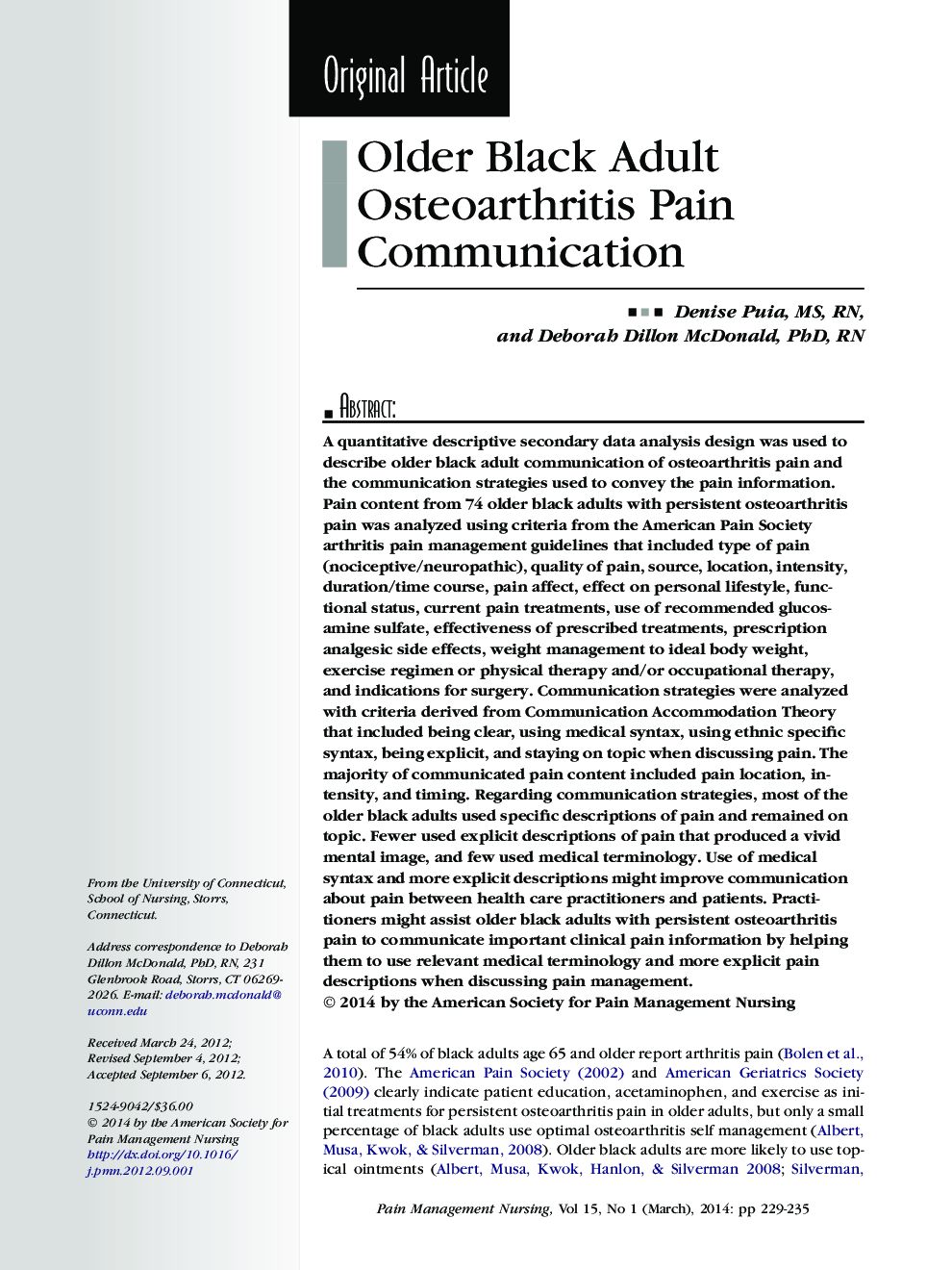| Article ID | Journal | Published Year | Pages | File Type |
|---|---|---|---|---|
| 2673698 | Pain Management Nursing | 2014 | 7 Pages |
A quantitative descriptive secondary data analysis design was used to describe older black adult communication of osteoarthritis pain and the communication strategies used to convey the pain information. Pain content from 74 older black adults with persistent osteoarthritis pain was analyzed using criteria from the American Pain Society arthritis pain management guidelines that included type of pain (nociceptive/neuropathic), quality of pain, source, location, intensity, duration/time course, pain affect, effect on personal lifestyle, functional status, current pain treatments, use of recommended glucosamine sulfate, effectiveness of prescribed treatments, prescription analgesic side effects, weight management to ideal body weight, exercise regimen or physical therapy and/or occupational therapy, and indications for surgery. Communication strategies were analyzed with criteria derived from Communication Accommodation Theory that included being clear, using medical syntax, using ethnic specific syntax, being explicit, and staying on topic when discussing pain. The majority of communicated pain content included pain location, intensity, and timing. Regarding communication strategies, most of the older black adults used specific descriptions of pain and remained on topic. Fewer used explicit descriptions of pain that produced a vivid mental image, and few used medical terminology. Use of medical syntax and more explicit descriptions might improve communication about pain between health care practitioners and patients. Practitioners might assist older black adults with persistent osteoarthritis pain to communicate important clinical pain information by helping them to use relevant medical terminology and more explicit pain descriptions when discussing pain management.
